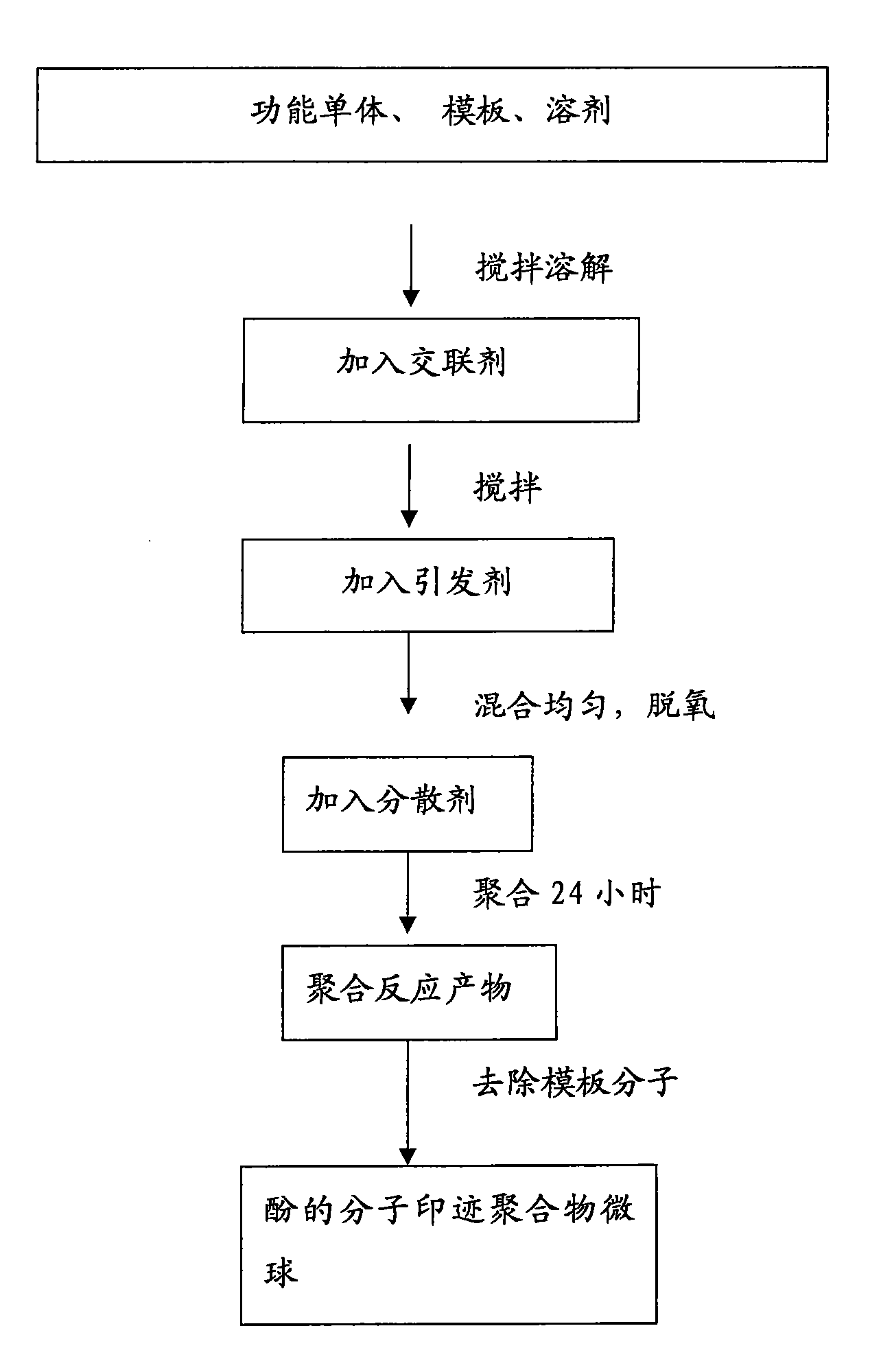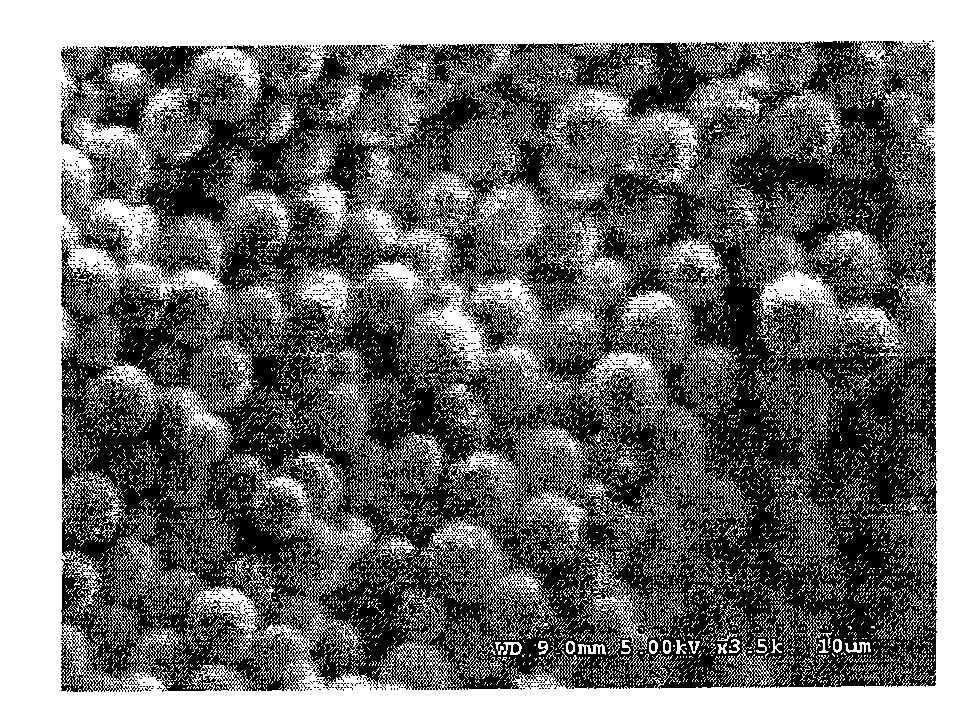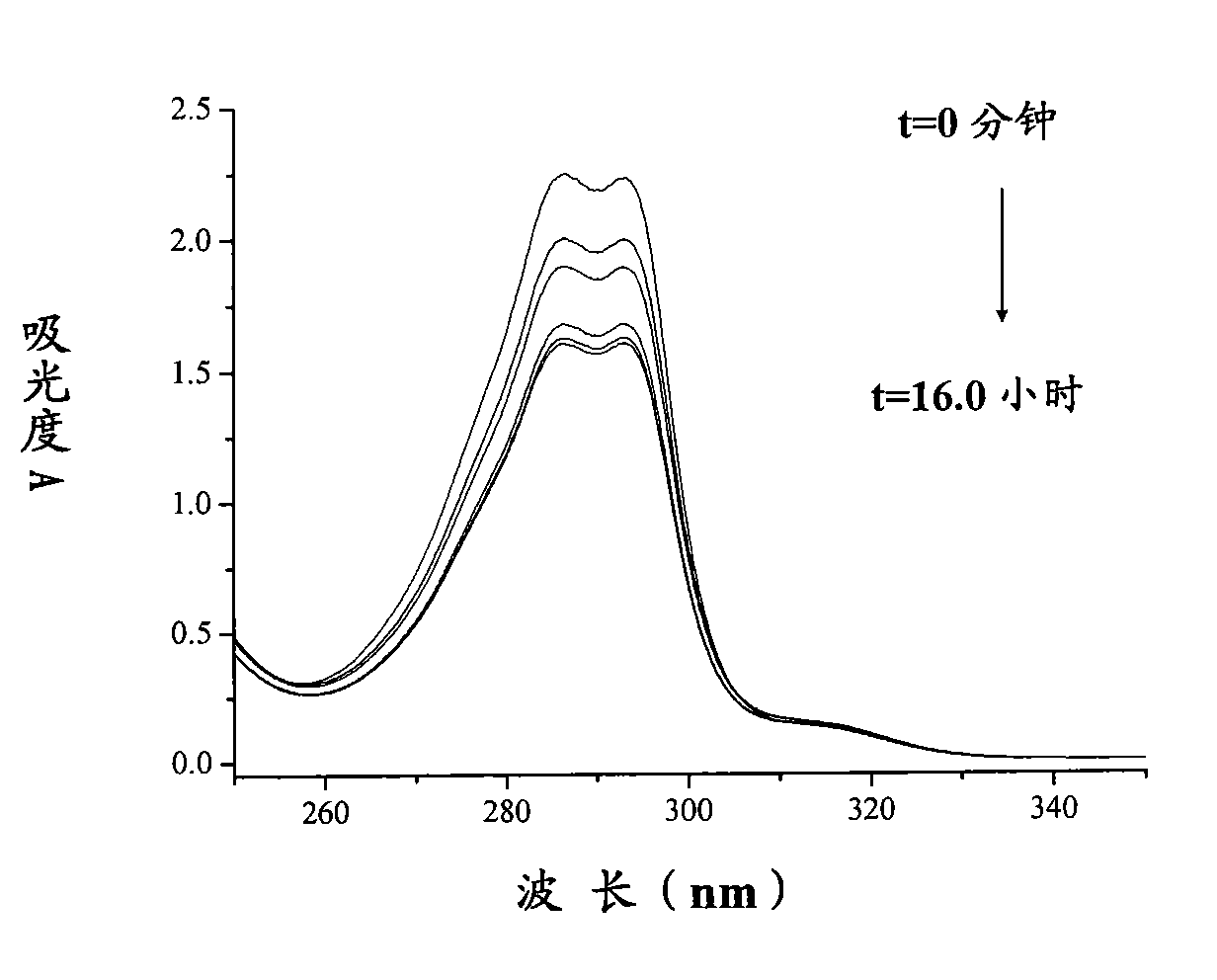Molecularly imprinted polymeric microspheres for phenol, preparation method thereof and use thereof
A technology of molecular imprinting and polymers, which is applied in chemical instruments and methods, analytical materials, material separation, etc., can solve the problems of column efficiency reduction, chromatographic peak tailing, and influence on separation effect, and achieve fast selective adsorption speed and simple preparation , The effect of strong selective adsorption performance
- Summary
- Abstract
- Description
- Claims
- Application Information
AI Technical Summary
Problems solved by technology
Method used
Image
Examples
Embodiment 1
[0054] With 1 mole of 2,4,6-trichlorophenol as a template molecule and 4 moles of methacrylic acid as a functional monomer, dissolve in 4ml of acetonitrile solvent to obtain a mixed solution; add 2,4,6 - Divinylbenzene with 20 times the molar weight of trichlorophenol as a crosslinking agent and azobisisobutyronitrile with 0.66 times the molar weight of 2,4,6-trichlorophenol are mixed evenly as an initiator, and nitrogen deoxidation is carried out for 10 minutes to remove Oxygen dissolved in the mixed solution. Take 3mL of the above solution and add it into 12mL of liquid paraffin, mix well, and put it under the irradiation of ultraviolet light for polymerization reaction for 24 hours. The reaction mixture was centrifuged at 3500 rpm for 20 min, the supernatant was discarded, and the solid was extracted by Soxhlet with an acetonitrile-acetic acid mixed solution (90:10, v / v) until there was no 2,4,6-tris in the extraction solution. Chlorophenols were detected. Dry the obtaine...
Embodiment 2
[0060] With 1 mole of 2,4,6-trichlorophenol as a template molecule and 4 moles of 4-vinylpyridine as a functional monomer, dissolve in 4ml of acetonitrile solvent to obtain a mixed solution; add 2,4 , L-2-diacrylamido phenylpropanol acrylate with 20 times the molar amount of 6-trichlorophenol as crosslinking agent and azobisisobutyronitrile with 0.8 times the molar amount of 2,4,6-trichlorophenol as The initiators were mixed evenly, and nitrogen deoxidation was performed for 10 minutes to remove dissolved oxygen in the mixed solution. Take 3mL of the above solution and add it into 27mL of liquid paraffin, mix well, and put it under the irradiation of ultraviolet light for polymerization reaction for 24 hours. The reaction mixture was centrifuged at 3500 rpm for 20 min, the supernatant was discarded, and the solid was extracted by Soxhlet with an acetonitrile-acetic acid mixed solution (90:10, v / v) until there was no 2,4,6-tris in the extraction solution. Chlorophenols were de...
Embodiment 3
[0062]With 1 mole of 2,4,6-trichlorophenol as a template molecule and 6 moles of methacrylic acid as a functional monomer, dissolve in 4ml of propionitrile solvent to obtain a mixed solution; add 2,4, Ethylene glycol dimethacrylate of 30 times the molar weight of 6-trichlorophenol is used as crosslinking agent and azobisisobutyronitrile of 0.5 times the molar weight of 2,4,6-trichlorophenol is mixed uniformly as an initiator, and the Nitrogen deoxygenation for 10 minutes to remove dissolved oxygen in the mixed solution. Take 3mL of the above solution and add it into 18mL of liquid paraffin, mix well and put it under the irradiation of ultraviolet light for polymerization reaction for 24 hours. The reaction mixture was centrifuged at 3500 rpm for 20 min, the supernatant was discarded, and the solid was extracted by Soxhlet with an acetonitrile-acetic acid mixed solution (90:10, v / v) until there was no 2,4,6-tris in the extraction solution. Chlorophenols were detected. The obt...
PUM
| Property | Measurement | Unit |
|---|---|---|
| specific surface area | aaaaa | aaaaa |
| particle diameter | aaaaa | aaaaa |
| particle diameter | aaaaa | aaaaa |
Abstract
Description
Claims
Application Information
 Login to View More
Login to View More - R&D
- Intellectual Property
- Life Sciences
- Materials
- Tech Scout
- Unparalleled Data Quality
- Higher Quality Content
- 60% Fewer Hallucinations
Browse by: Latest US Patents, China's latest patents, Technical Efficacy Thesaurus, Application Domain, Technology Topic, Popular Technical Reports.
© 2025 PatSnap. All rights reserved.Legal|Privacy policy|Modern Slavery Act Transparency Statement|Sitemap|About US| Contact US: help@patsnap.com



